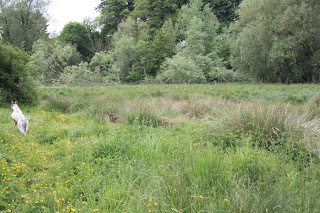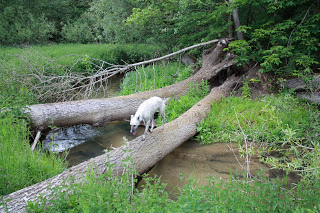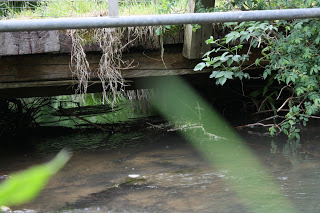There are certain flowers that I have been aware of all my life. I’m not sure if that proves that I was an extremely sensitive child or whether it is just because my parents and other relatives only ever talked about gardening. I can still see pansies growing in the circular bed beneath the apple tree and shrub roses either side of the archway that led to the vegetable garden. The strawberries grew along the right hand fence and the rhubarb in front of the chicken run and yet we moved from that house when I was just nine years old. But there is one thing that bothers me: I can recall the Iris, dark blue, growing tall and strong but I can’t remember if they were in the front or back garden. It doesn’t really matter, of course, but it seems odd that I can’t picture them when I can clearly remember my father telling me enthusiastically that “they come in all the colours of the rainbow.” Despite his passion for them he only ever grew the one colour (which is perhaps odder still) and it was only when I had a garden of my own that more and more colours started to creep in.

An idea that I had wanted to try out for some time, spurred on by this memory, was to plant a border devoted to iris of all colours – a rainbow border. This requires space, not because the plants take up much room but because they have quite a short flowering time, perhaps just two or three weeks. This makes such a border rather a luxury, especially in a small garden. 

I garden for my living – a hobby turned into a career – and I have quite a number of clients with gardens, some of very many acres. It is in one of these that the rainbow border has been planted. Confidentiality prevents me from showing the completed border in its entirety so you will have to imagine wave after wave of varying shades of blues, whites, burnt ochres, burgundies, golds and purples. The effect is breath-taking as is one other thing I’d forgotten from childhood: scent although not all colours are fragrant and those that are vary in strength and quality. Spectacular they may be when in bloom but blink and they are gone for another twelve months. Fortunately, herbaceous borders bursting into flower draw attention away from what has now become a dull part of the garden.

In my own garden, I’ve had to be more restrained, poking them into odd spaces where they can get enough sun, yet they still offer surprises. This yellow variety, Butterscotch Kiss, is a good colour for it is not harsh; best of all its fragrance is overpowering, scenting the whole garden and wafting into rooms through open windows.
Although the Bearded Irises, Iris germanica, arefavourites, there is always room for smaller varieties. The tiniest are the early flowering Iris reticulata which tend to get lost in my borders so are grown in pots. They flower in February and March. The Dutch Irises are useful grown in the vegetable garden for cutting but also grow well in the flower garden, flowering about now. Both types are grown from corms (similar in appearance to bulbs), planted in the autumn. Iris unguicularis is a perennial, winter flowering iris, ideal for picking and often with a delicate perfume. In the photo below, it is growing in a pot indoors and flowering on Christmas Day. In the garden it wants to be placed at the foot of a wall and grown in poor, stony soil.
The bog Iris, Iris sibirica, grows well in wet soil but also adapts quite happily to the garden border providing it is kept well watered until established. Its leaves are grass-like and the flowers much daintier than their Bearded cousins.
Compared to the standard Iris sibirica above, Flight of Butterflies is more compact and has flowers with emphasised blue and white veining
There are numerous types, too, for the pond and these grow standing in several inches of water. Our native Yellow Flag, Iris pseudoacorus, is robust and can be too dominant in smaller areas of water. It is a lovely sight when seen in the wild – we have plenty here in the secret valley growing along the edge of the river, their broad rush like leaves making the perfect resting place for dragonflies .




















